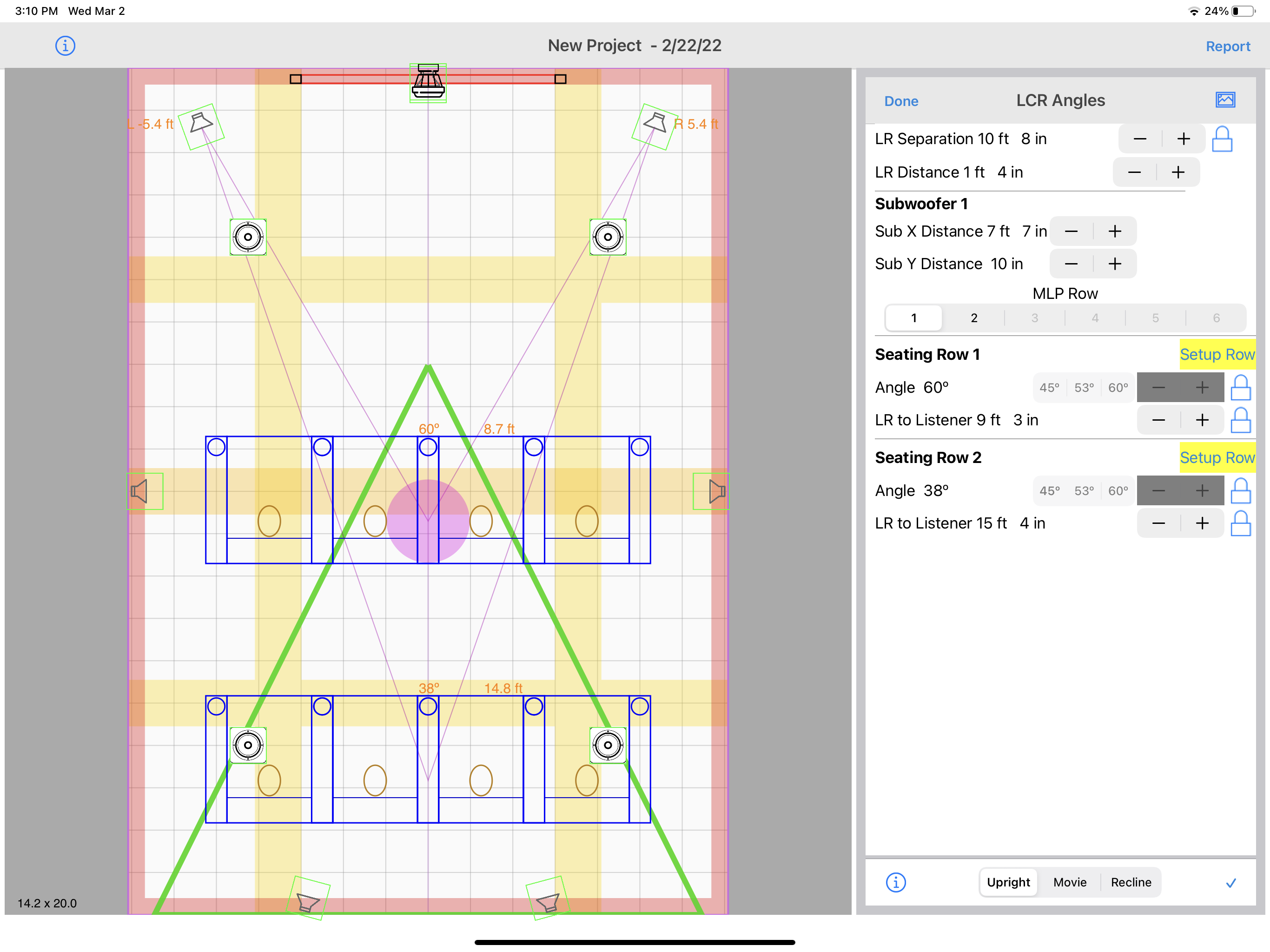
- To access this tool touch the arrow on the checklist item.
- This tool take us to the next level. Besides showing the work we accomplished in seat and sub positioning it looks at LCR angle.
- It also introduces us to the "Sweet Triangle"; the area in the room where front soundstage focus is best. Depicted in green on the tool. See more below.
- All the companies (Dolby, DTS, Atmos) that create the immersive systems we use recommend the left and right front speakers(LR) listening angle be between 45 and 60 degrees.
- If we consider the seat placement to be set, this means finding a LR separation that place the seats with that range.
- In a small room it's typical to get the MLP row in the range but often the second row is not. This might mean revisiting your seat placement but focus on the MLP.
- The controls open up all of the positional settings to you but try to get the LCRs positioned best for the seat arrangement you based on your modal analysis.
- After completing this tool, be sure to save a screenshot using the screenshot icon located under "Report". It will be in the final report.
- You may not be able to change any of the Acoustical Framework in your calibration but using the tool, you will have a birds eye view of any deficiencies.
- As always, mark the item complete and add any comments for your client.
The Sweet Triangle
The purpose of the center channel is to enlarge the area where stereo imaging could be heard. Instead of a “sweet spot” as we had with two channel systems the good listening area is expanded into a sweet triangle as depicted in our drawing. The LCR Position Tool shows an estimated sweet triangle (the green triangle).
Computer modeling the Sweet Triangle (right) is possible, but there aren’t any handy programs to do this for most integrators. A useful approximation involves noting that the Sweet Triangle is a function of the distance between the LCRs. More precisely, the listening angles between the center and each LR speaker. In reality, the true width and shape of the Sweet Triangle is also a function of the directivity of the front speakers. If we use wide dispersion speakers, the triangle will be wide enough for most rows. However, it’s always worth estimating as our tool does. The possibility exists of listeners being outside of the triangle on the edges of wide rows. Especially if the row is nearer to the front. Keeping as many listeners as possible inside the triangle is recommended. Of course, the MLP is always the best location.


